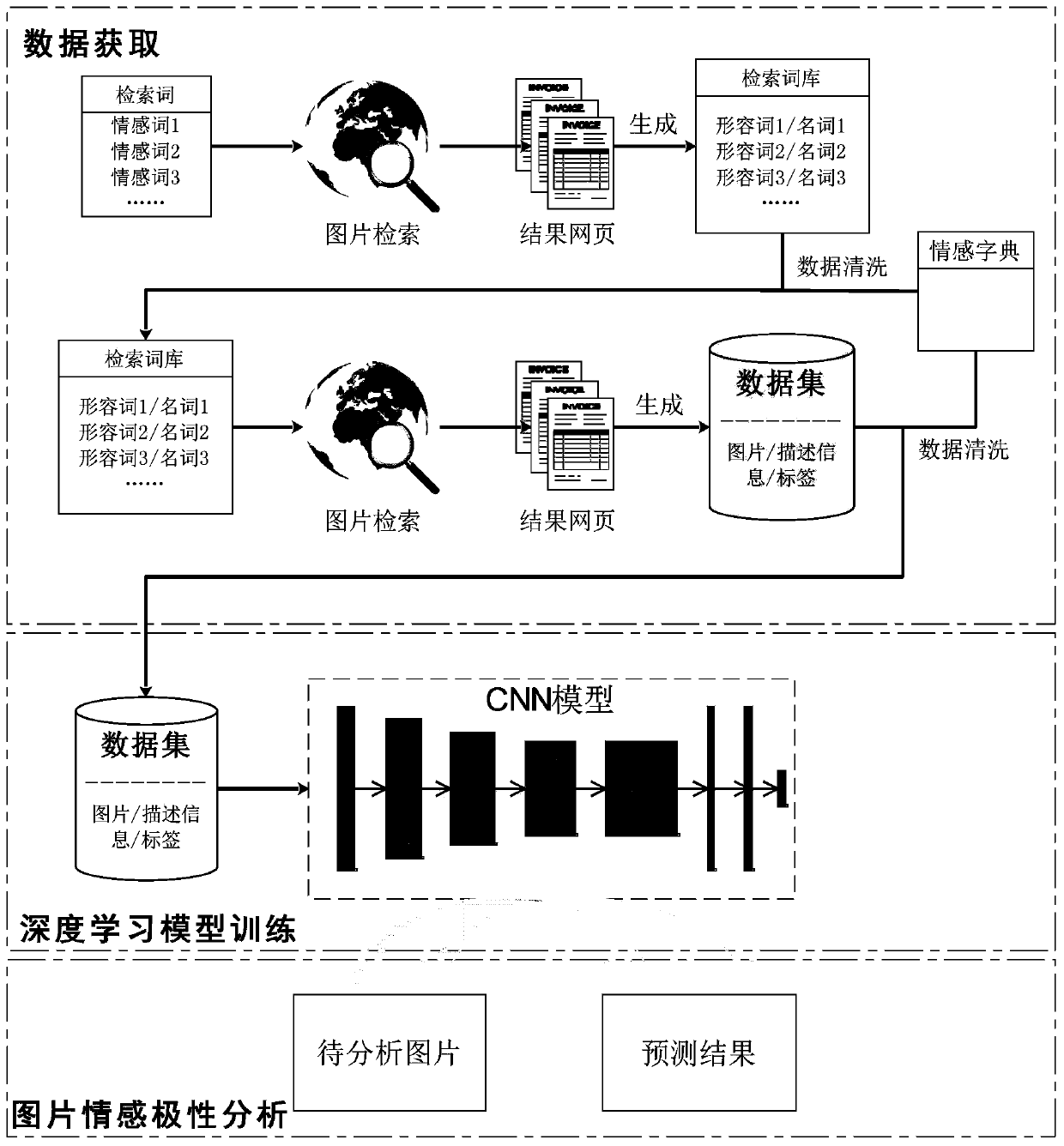A Deep Learning-Based Image Sentiment Polarity Analysis Method
A technology of emotional polarity and deep learning, applied in semantic analysis, network data indexing, and other database retrieval, etc., can solve problems such as small data sets, unsatisfactory final prediction accuracy, and limited performance, and achieve the effect of large-scale data
- Summary
- Abstract
- Description
- Claims
- Application Information
AI Technical Summary
Problems solved by technology
Method used
Image
Examples
Embodiment Construction
[0078] In order to make the object, technical solution and advantages of the present invention clearer, the present invention will be further described in detail below in conjunction with the accompanying drawings. The purpose of the present invention is to provide a kind of picture emotion polarity analysis method based on deep learning, its frame is as follows figure 1 shown. The present invention will be further described in detail below in conjunction with the accompanying drawings and examples.
[0079] The realization steps of this invention are as follows:
[0080] 1. Data acquisition
[0081] This method can be applied to most image social networking sites with image search functions. In the specific implementation process, we chose Flickr, a photo social networking site, to collect data. For a retrieval request, Flickr currently allows a peak of 2000 images to be returned.
[0082] 1.1. Prior knowledge preparation
[0083] In the implementation process, we choos...
PUM
 Login to View More
Login to View More Abstract
Description
Claims
Application Information
 Login to View More
Login to View More - R&D
- Intellectual Property
- Life Sciences
- Materials
- Tech Scout
- Unparalleled Data Quality
- Higher Quality Content
- 60% Fewer Hallucinations
Browse by: Latest US Patents, China's latest patents, Technical Efficacy Thesaurus, Application Domain, Technology Topic, Popular Technical Reports.
© 2025 PatSnap. All rights reserved.Legal|Privacy policy|Modern Slavery Act Transparency Statement|Sitemap|About US| Contact US: help@patsnap.com



